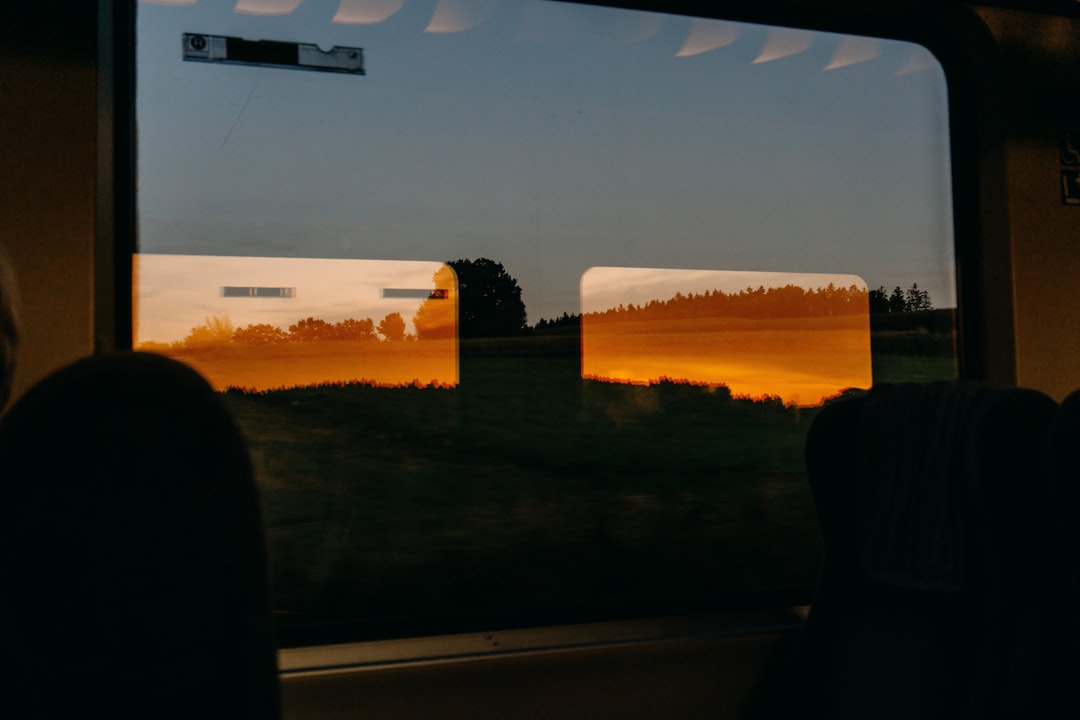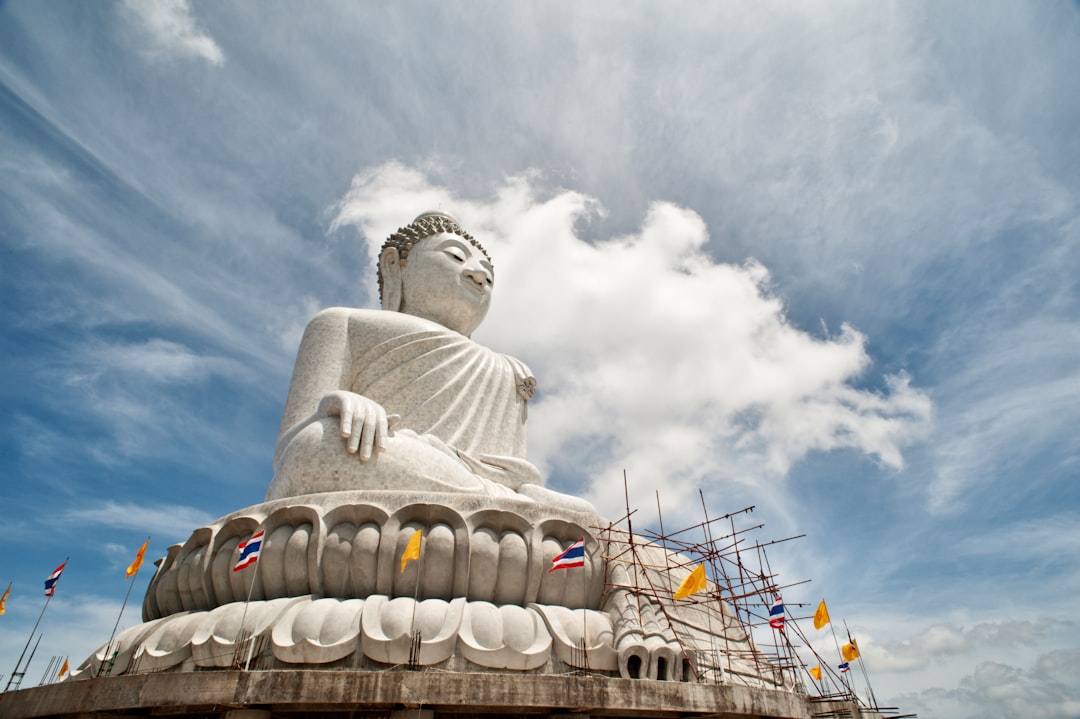Last Minute Travel Dynamics and The Art of the Curated Selfie
Last Minute Travel Dynamics and The Art of the Curated Selfie - Spontaneity Versus the Social Media Shot
In the dynamic world of documenting travels, the constant tug-of-war between fully experiencing a moment and meticulously framing it for an audience remains a central challenge. As of mid-2025, this dilemma hasn't faded; if anything, the pressure to deliver visually perfect content continues to shape how people journey. Travelers, whether aiming for influencer status or simply sharing with friends, often find themselves navigating a tricky space where genuine interaction with a place can be sidelined in favor of capturing the ideal, shareable shot. This pursuit of digital applause can sometimes strip away the pure joy of discovery, leading one to wonder if the quest for online validation isn't overshadowing the very essence of why we explore in the first place.
Our understanding of neural pathways suggests that the human brain’s reward circuitry responds more vigorously to unforeseen exploration and genuine surprise encountered on a journey, rather than the anticipated, often external, affirmation derived from a meticulously pre-visualized photo opportunity. This points towards an inherent satisfaction, distinct from any public reception.
Further cognitive studies illustrate a fascinating trade-off: the intense focus required to compose and capture a 'perfect' shareable image appears to detract from the brain's capacity to consolidate detailed episodic memories of the actual locale. This reallocation of attentional resources towards the lens, rather than the lived moment, may result in personal recollections that are less rich or detailed.
Interestingly, analysis of audience engagement metrics often reveals a paradox: content identified by viewers as truly unscripted, perhaps featuring slightly imperfect framing or unpolished expressions, frequently garners greater user trust and extended attention. This suggests a evolving digital preference, where raw authenticity increasingly outperforms meticulously refined digital portrayals.
From a psychological standpoint, the drive for a 'flawless' visual output can introduce a counterintuitive element: heightened anxiety. This performance-oriented mindset, focused on external validation, seems to diminish the very sense of joyful discovery and spontaneous wonder that travel is meant to evoke, replacing intrinsic pleasure with a form of task-driven stress.
Finally, a notable correlation has been observed between the consistent presentation of an exclusively idealized online narrative and an increase in self-reported imposter syndrome among creators. The constant effort to bridge the gap between their genuine experiences and the polished, often aspirational, versions displayed publicly can foster a profound sense of psychological disconnect.
Last Minute Travel Dynamics and The Art of the Curated Selfie - The Evolving Blueprint of Influencer Aesthetics
As of July 2025, the visual language shaping travel content continues its rapid transformation, particularly within the realm of influencer aesthetics. No longer is the singular pursuit of highly polished, perfectly composed imagery the dominant aspiration. Instead, a new visual vernacular is emerging, reflecting a more nuanced approach to depicting travel. This involves a discernible move away from the hyper-curated, aspirational fantasy towards a more grounded, narrative-driven visual storytelling. This aesthetic shift signals a critical juncture for those chronicling their journeys, demanding innovative ways to capture experiences that resonate deeply without relying on traditional notions of perfection.
As of mid-2025, several intriguing observations have emerged regarding the visual language prevalent among those sharing their travels online. Studies employing sophisticated brain imaging techniques have begun to pinpoint how specific aesthetic choices, often seen in widely popular travel imagery, directly engage our neural circuitry. For instance, pictures featuring strong visual balance or those dominated by warm, inviting hues appear to activate the ventral striatum – a part of the brain linked to feelings of reward and contentment. This suggests there might be a fundamental biological basis for why certain visual styles are perceived as inherently pleasing.
Furthermore, advanced analysis of eye movements reveals a curious human preference. While sophisticated algorithms are now capable of producing perfectly optimized visuals, audience attention, measured through precise eye-tracking, tends to linger longer on photographs that retain subtle, almost imperceptible human touches or minor visual irregularities, rather than those rendered flawlessly by artificial intelligence. This suggests a subconscious lean towards what is perceived as genuinely human-created, even when it’s merely a tiny deviation from perfection.
On a different note, recent long-term investigations tracking individuals who consistently craft and share highly curated travel content have documented a noteworthy trend in their physical well-being. A statistically significant increase in reported issues affecting the neck and lower back has been observed, directly correlated with the prolonged and repetitive adoption of specific, often aesthetically demanding, postures required for photo and video creation. This highlights an often-unseen physical toll associated with maintaining an aspirational visual presence.
Interestingly, the growing global emphasis on responsible and sustainable exploration appears to be shaping visual trends. Data now indicates that travel content characterized by its visual subtlety, relying on natural lighting and conveying an ethos of mindful interaction with places, is increasingly outperforming heavily edited or overtly consumer-focused imagery in terms of viewer engagement. This signals an evolving appreciation among audiences for narratives that prioritize genuine connection over a glossy portrayal of acquisition.
Finally, explorations into how visual information is processed by the brain indicate that travel imagery embracing minimalistic principles – focusing on clean lines and a general reduction of visual clutter – results in less mental effort for viewers. This streamlined presentation seems to facilitate quicker comprehension of a destination’s key features and improves the retention of information, suggesting that an uncluttered visual narrative is simply easier for the human mind to absorb and remember.
Last Minute Travel Dynamics and The Art of the Curated Selfie - Algorithms and the Aspirational Travel Frame
This segment explores the subtle yet powerful influence of social media algorithms on how travel experiences are not just shared, but increasingly *defined* by a digital aspiration. We delve into how these automated systems prioritize certain visual styles, inadvertently shaping what travelers perceive as the ideal, shareable journey, often diverging from authentic, lived moments.
Our analysis of platform algorithms, often powered by sophisticated neural networks, indicates a strong bias towards visual content possessing certain predefined characteristics. Images with vibrant, oversaturated colors or those featuring iconic landmarks framed in predictable ways tend to gain greater algorithmic traction. This preference doesn't merely surface existing trends; it actively sculpts and narrows the public perception of what constitutes a "desirable" travel experience, establishing a feedback loop where successful content shapes future creation and visibility.
From a behavioral neuroscience standpoint, the probabilistic reward system inherent in platform algorithms—where the visibility of a post is unpredictable, contingent on metrics like reach and engagement—mirrors the intermittent reinforcement schedules found in gambling. This design can trigger the brain's dopaminergic reward pathways, fostering a persistent, almost compulsive drive in creators to generate ever more visually "aspirational" travel content. It's a continuous, often unconscious, push for hyper-optimization, driven by the elusive promise of algorithmic favor.
Our econometric modeling reveals a statistically significant link between a location's calculated "shareability score"—essentially, its historical success rate on social platforms—and its subsequent popularity among individuals aiming to craft digitally aspirational travel narratives. This suggests that the perceived likelihood of a destination performing well algorithmically can increasingly supersede personal curiosity or genuine interest, becoming a primary driver in travel planning and selection.
Through extensive computational analysis of vast travel imagery datasets, we've observed that content-ranking algorithms, by consistently rewarding certain visual archetypes, inadvertently foster a widespread "aesthetic cloning." This manifests as a striking sameness in composition and visual style across what are deemed "aspirational" travel photographs. The outcome is a noticeable homogenization of digital travel narratives, where algorithmic efficiency in content delivery appears to come at the expense of genuine visual diversity.
Electrophysiological investigations into content creators' brain activity reveal a compelling pattern: when aspirational travel posts garner limited algorithmic visibility or engagement, neural pathways typically linked to social evaluation and self-worth exhibit significant activation. This impersonal form of "algorithmic disapproval" appears capable of eliciting a deep sense of personal inadequacy, underscoring how non-human system feedback can profoundly impact a creator's emotional well-being and sense of validation.
Last Minute Travel Dynamics and The Art of the Curated Selfie - Beyond the Filter The Traveler's Gaze
"Beyond the Filter: The Traveler's Gaze" now turns our attention to a more fundamental aspect of travel as of mid-2025: the very act of observation itself. After years of framing journeys through a lens, often for an imagined audience, there's a growing inquiry into the quality of how individuals truly *see* the world around them. This section explores what happens when the priority shifts from capturing a perfect image to the deeply personal process of absorbing a place. We will consider how a conscious, unfiltered gaze might offer a richer engagement with destinations, fostering a different kind of memory and connection that exists purely for the individual, free from the demands of external validation or algorithmic favor. It’s about rediscovering the unmediated experience of looking.
Intriguing insights have emerged regarding the cognitive and perceptual consequences of documenting experiences through the lens, exploring aspects of the "Traveler's Gaze."
Studies leveraging neuroimaging techniques suggest that continuous reliance on sequential photographic capture of a novel environment may correlate with reduced activity in brain regions critical for constructing a comprehensive internal spatial model, potentially leading to a less integrated mental representation of the explored locale compared to direct, unaided observation.
Furthermore, when the brain prioritizes visual encoding for photographic purposes, this can inadvertently downregulate the concurrent registration of other sensory modalities such as auditory cues, olfactory information, or tactile sensations. This selective attentional allocation may result in a memory trace of the experience that, while visually rich, lacks a holistic, multisensory imprint.
Electrophysiological observations indicate that exposure to unfiltered or spontaneously captured travel imagery tends to elicit heightened activation within specific cortical networks associated with self-reflection and social understanding in the viewer. This neurophysiological response suggests a potentially deeper, more resonant connection is forged when content is perceived as genuinely unprocessed.
An interesting pattern has been observed where the immediate digital curation and public dissemination of a particularly significant travel moment might, paradoxically, reduce the subjective intensity of its subsequent positive emotional recall. It appears that the initial affective processing of the experience may be, in part, externalized or 'discharged' through the act of seeking external validation.
Finally, an investigation into visual processing pathways reveals that consistent engagement with novel visual stimuli via a camera's screen, as opposed to direct visual input, can subtly modulate neural activity within the ventral visual stream. This pathway, crucial for object and scene recognition, may develop a form of perceptual filtering that diminishes the immediate, unmediated immersive quality of the observed environment.
More Posts from itraveledthere.io:
- →The AI Effect on Travel Selfies Used for Dating
- →7 Emerging Trends in Travel Photography Gear for 2025
- →The Potential and Pitfalls of AI Travel Selfies for Dating
- →Warsaws Noteworthy Sites for Standout Travel Selfies
- →7 Instagram-Worthy Spots in Saudi Arabia's Booming Tourism Landscape
- →Capturing the Holiday Spirit A Guide to Festive Photography at Eastin Hotel Kuala Lumpur

